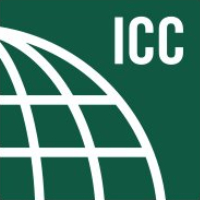
Building Safety Codes Changed as a Result of 9/11
![]() The 9/11 attacks on the World Trade Center identified a new, challenging frontier in public safety for the International Code Council, the primary developer of construction industry building safety codes and standards used throughout the United States.
The 9/11 attacks on the World Trade Center identified a new, challenging frontier in public safety for the International Code Council, the primary developer of construction industry building safety codes and standards used throughout the United States.
“The hazards we historically evaluated and planned for in building safety and fire prevention codes to save lives and reduce property damage are largely measurable and predictable when applied to natural disasters ranging from tornadoes to hurricanes, earthquakes, floods and fires. But the events of 9/11 revealed the effects of terror attacks on buildings are neither quantifiable nor predictable. They are limited only by the expertise and resources available to those bent on destruction,” said Gary Lewis, who for several years chaired the International Code Council Ad Hoc Committee on Terrorism-Resistant Buildings.
Among the experts serving on the committee created to address the 9/11 tragedy were code enforcement officials representing building and fire departments, design professionals and fire protection engineers, including Lewis who is the Chief Inspector for Summit, N.J., and has been in code enforcement for more than 30 years. The committee finished its work in May 2010.
The nation’s building and fire codes historically have been responsive to tragedy. Whether it was the 1906 San Francisco earthquake, the 1911 Triangle Shirtwaist fire in New York City, or more recent natural disasters such as Hurricane Katrina, construction codes have been reevaluated to address the consequences of natural disasters. The Code Council’s activity heightened when the National Institute of Standards and Technology, a federal agency, released its Report on the Collapse of the World Trade Center, which contained 30 broad recommendations for the model codes, standards industry, design community and emergency responders.
“ICC evaluated the recommendations related to model codes, and initiated code change proposals designed to mitigate the effects of a terror event in case preventive measures such as governmental intelligence activities or building security somehow failed,” Lewis said. “The code change proposals were not all successful, although many were incorporated. Some that were not have since prompted activity in other areas such as structural design to address the concerns. Some of the code change proposals resulted in higher construction costs, but others were so simple they had little or no cost impact, but great potential benefits.”
Changes to the International Codes as a result of 9/11 include:
- Elevators are required in high-rise buildings more than 120 feet tall so firefighters can get to, and fight fires, without walking up from the ground floor with heavy equipment;
- An additional stairway for high-rises that are more than 420 feet tall;
- In lieu of the additional stairway, an option to provide enhanced elevators that can be used by the building occupants for emergency evacuation without waiting for assistance from emergency personnel;
- A higher standard for fire resistance in high-rise buildings more than 420 feet tall;
- More robust fire proofing for buildings more than 75 feet tall, which will be less likely to be dislodged by impacts or explosions;
- Shafts enclosing elevators and exit stairways that have impact resistant walls;
- Self-luminous exit pathway markings in all exit stairways that provide a lighted pathway when both the primary and secondary lighting fails; and
- Radio coverage systems within the building to allow emergency personnel to better communicate within the building and with emergency staff outside the building supporting the response.
“What we learned from this process is that building vulnerabilities can be addressed in areas where there is clear benefit,” Lewis said. “The Code Council has done an admirable job in that regard. Beyond that, building owners, operators and state and local governments will need to be ever vigilant and tailor their preventive strategies based on threat and risk assessment.”
The International Code Council is a member-focused association dedicated to helping the building safety community and construction industry provide safe, sustainable and affordable construction through the development of codes and standards used in the design, build and compliance process. Most U.S. communities and many global markets choose the International Codes.







